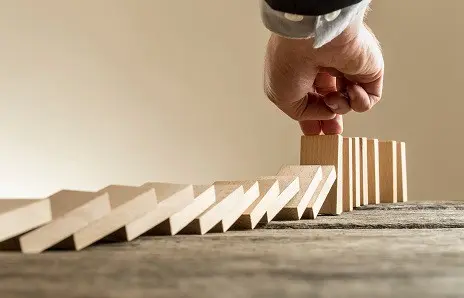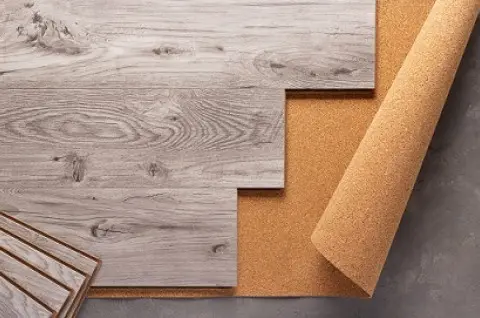BAUSTELLE VORAUS - Refurbishment of a property
REASONS FOR REFURBISHMENT
When it comes to renovating a property, most property owners see the mountain of work, the time required and the costs as a major hurdle. These factors seem daunting at first. But in the end, this effort pays off - for you and for your property.
Modernising the energy standards that a refurbishment entails not only benefits the environment, but also you as the owner in the long term. This is because economical consumption has an immediate positive effect on the property's operating costs. As the infrastructure is constantly growing and being optimised, new buildings often have the edge over existing properties. However, refurbishments can also make existing properties, which sometimes have weak points, significantly more attractive than new buildings.
Refurbishments are also worthwhile for vacant workshops or storage rooms, as they enable unique concepts for new living space. Historic buildings or properties with special architectural features in particular offer completely new possibilities through refurbishment. Renovation increases their value in the long term and makes them particularly interesting for certain professional groups who wish to receive visitors in prestigious rooms. From well thought-out preparation to your rights and obligations in the course of a refurbishment: this guide will lead you step by step through the various phases of property refurbishment.
Refurbishments are also worthwhile for empty workshops or storage rooms,
they enable unique concepts for new living space. Historic buildings or properties with special architectural features in particular offer completely new possibilities through refurbishment. Renovation increases their value in the long term and makes them particularly interesting for certain professional groups who wish to receive visitors in prestigious rooms.
From well thought-out preparation to your rights and obligations in the course of a refurbishment: this guide will take you step by step through the various phases of property refurbishment.
1. current plans
Go through the rooms room by room. Also create a new building plan in which you collate the room layout, wall lengths and thicknesses, doors and windows and room heights in detail. This basic information is very important for you as the client or for working with an architect. It is important to sound out the potential of the property and the spatial possibilities. Flawless planning documents and a good condition analysis are very valuable - for example when obtaining a building permit or when comparing offers for conversion work. After all, these will ultimately show you what is possible - and what is not - with the refurbishment.
In the first step of the refurbishment preparations, it is important to check the condition of the house again in order to be able to set priorities. Some damage may already be recognisable by eye. Others, on the other hand, are not so obvious and therefore often remain untreated, which can result in high costs in the short or long term. The better you know the individual problems, the more efficient the consultation and planning of the renovation measures will be. A well-founded analysis of the current situation therefore saves money, time and nerves.

2. analysis of the substance
You now have an updated plan of the building. Now it's time to analyse what is usually hidden by plaster and wallpaper: the fabric of the building. You should call in an expert to help you analyse the statics and stability of your property with professional measuring tools, as property owners do not always have a thorough knowledge of statics, building structures or the building materials once used. Elements that contribute to the statics of the building or protect the property from the weather should be examined in detail during the analysis. Experience has shown that it is precisely these elements that make a renovation worthwhile and valuable.
3. the energetic possibilities
The so-called energy index is important for calculating energy efficiency. This tells you how much energy was consumed per heated square metre. This formula is very easy to solve, even with a calculator: Determine the consumption in kilowatt hours for heating and hot water from the annual bills. If you then divide this sum by the area of the heatable rooms, you get the energy index. But what do you do with this figure? According to general experience, comprehensively renovated properties today have an annual building energy consumption in the range of 60 to 100 kwh/m². This information will give you an initial impression of whether any measures are sensible and necessary.
If your value is well over 100 kwh/m², you should consider using an energy consultant. They will not only advise you on where refurbishment is particularly worthwhile, but will also issue you with the official cantonal building energy certificate (GEAK). This will show you how your property compares to similar properties. A GEAK plus also shows additional variants with the corresponding costs. With this information, you have now created the basis for further steps and can estimate both the costs and the time required.
4. building programme - what is it?
The costs of renovating or modernising a property can quickly mount up. Especially if certain energy efficiency measures are also implemented in the course of this, the so-called building programme helps with special subsidies. Property owners can hope to receive subsidies, particularly for the thermal insulation of facades or roofs and the installation of renewable energies. However, the measures and contributions vary from canton to canton. The cantons determine individually which measures they subsidise and under what conditions. It is best to find out what the framework conditions are in your canton; the Conference of Cantonal Energy Directors EnDK provides an overview and lots of additional information.
The aforementioned GEAK Plus (cantonal building certificate plus recommendations, www.geak.ch) will help you to plan your construction project in advance and is sometimes also a condition for receiving subsidies. For support in applying for the relevant subsidies, you can look for tradespeople or architects who will check all the details and options with you and give you sensible advice on upcoming measures. If you have any initial general questions about energy and buildings, you can contact the SwissEnergy.ch infoline. You can find further important information here: www.dasgebaeudeprogramm.ch. The federal and cantonal building programme is an important pillar of Swiss climate and energy policy. In addition to the federal and cantonal building programme, there are other interesting funding opportunities.
PLANNING > REALISATION
The framework conditions have been created, now comes the next step: planning. Save yourself trouble and hidden costs during the renovation with thorough preparation. Above all, check the legal and technical circumstances so that you are not surprised by unexpected events.

1. ideas and framework conditions
No two properties are the same. Every property has its own charm, its own style and unique refurbishment options. Be clear about exactly what you want your property to look like in the future. The more detailed you work this out, the better the end result will be. However, if you get caught up in your big dreams now, you run the risk of losing sight of certain aspects. This is because there will be limits to what you can realise at some point, both legally and in terms of feasibility. For this reason, you should find out at an early stage what measures are possible for your property and what special features you need to be aware of.
2. goals
How should my future property be furnished? Will the use of the rooms remain the same or do they need to be changed? The following points should be answered before all others in order to maintain the quality of your property and secure it in the long term.
GUIDELINES ON THE INTERVALS AT WHICH RENEWALS ARE ADVISABLE
10-15 years 15-25 years 20-50 years
- Painting work (interior) - Painting work (exterior) - Façade cladding
- Wallpaper - Heating - Parquet
- Carpets - Radiators - Flat roofs
- Kitchen appliances - Boiler - Roller shutters
- Sun blinds - Facade plaster - Locking systems
- Slat blinds - Sanitary installations
- Plastic floor coverings
Is the sale of your property still a long way off? No reason to neglect the increase in value when renovating! Every planning objective, especially when energy-saving measures are taken, also means an increase in the value of the property. And these refurbishment measures can tip the scales in favour of a prospective buyer later on. Talk to an architect or estate agent before starting the refurbishment to perhaps also recognise new trends and thus be able to plan comprehensively and with foresight.
